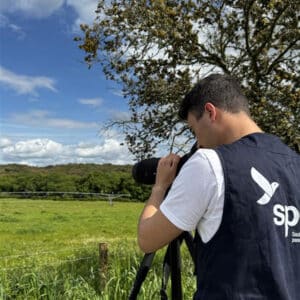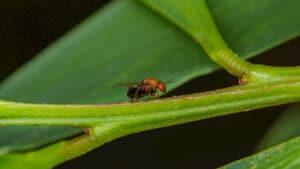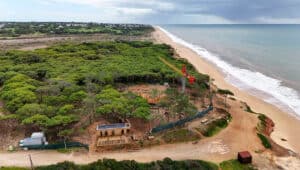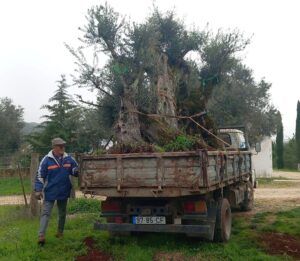I first wrote an article in the Algarve Resident about European bee-eaters three years ago, but since then I have studied, watched and photographed these beautiful birds and thought it time to share some of the photographs that I have captured over these last three years.
Due to the landscape changing locally, mainly vertical banks becoming overgrown, the local colony that established yearly has gone from a huge 40+ birds down to just a few pairs. This coming autumn and winter, I will be looking for opportunities to create new locations for our existing colony by clearing some of the previously used banks to at least allow room for expansion.
Although the numbers here are low, I’m still in adoration when a group of these acrobatic birds fly by the house a few times a day.
Normally, you can set an entry in the calendar for April 1, which is the date they start to appear after their winter in southern Africa, but the last few years have been affected by changes in the weather. Both 2019 and 2021 were cool and wet, 2019 in particular, so the birds were two weeks late returning. This year, however, they started to appear a week earlier than usual.
I often hear comments of “beautiful birds, but a shame for the bees” and whilst there is a drive to protect bee-life, the bee-eaters actually eat anything they can catch in the air, so often you will see them catch wasps, hornets, butterflies, moths and even grasshoppers. The Algarve Serra is rich with honey-producing bees and although the bee-eaters prey on them, it does not affect the numbers in great enough proportions to affect the bee colonies.
Bee-eater watching and photographing can be easily achieved when you discover a nesting colony ensuring it is carried out from a distance. They nest in fresh tunnels dug in soft vertical banks which are a metre in length with a large chamber at the end and they are usually never far from water.
Approaching a live colony closely is not a great idea due to the possibility of the birds abandoning. Care must also be taken around colonies near rivers. I have witnessed common kingfisher also choosing the same place to build their almost identical nest and common kingfishers are very shy and fearful birds. In the UK, it is illegal to approach and photograph a common kingfisher nest without a licence but, as far as I’m aware, this is not the case in Portugal.
Both sexes are very similar at up to 30cm in length, but the female usually has more green shoulder feathers than the male’s chestnut brown. When prey is caught that has a stinger, they bash the insect on the perch to knock the stinger off before consuming and, during the early courting period, the male will offer any large catch to the female as a romantic gift, only consuming the smaller ones himself.
If you observe a colony, you may notice multiple birds visiting the same tunnel, due to the birds breeding colonially and often non-breeding birds will assist feeding with a breeding pair.
As we now move into the latter part of the breeding season, I am planning some sessions with a new colony just the other side of the border in the Lower Alentejo and updates can be found on my website and Facebook page.
By Craig Rogers
|| features@algarveresident.com
Craig Rogers is a wildlife and nature photographer from Wales now living in the Algarve, offering photography workshops. For more information, photographs and his blog visit www.craigrogers.photography































